Today, medicine has reached such a level that properly selected drugs can combat any type of fungus. But many people don't trust science and prefer to treat toenail fungus with folk remedies. And they are doing it wrong: illiterate treatment does not eliminate pathogens, but at best slows their growth slightly.
If you want to use traditional medical methods at home, they should only be used as an additional treatment to complex therapy and only after consulting a doctor.
Characteristics of the mushroom
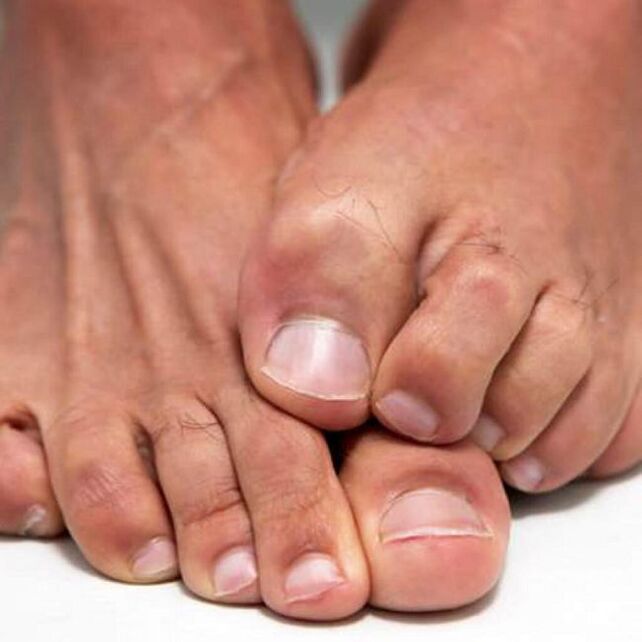
The difficulty in treating athlete's foot is that there are several thousand species of these pathogens worldwide, many of which can successfully live and develop on human skin.Fungal spores are very persistent, quickly take root in the epidermis and penetrate into the deep layers of the skin; they can only be destroyed with drugs specific to their species.In addition, treatment cannot be interrupted until the pathogens are completely killed: if even one spore survives, the likelihood of a relapse is high.
Therefore, it is not enough to see a doctor; tests must also be carried out to determine the type of athlete's foot. Only in this case can the doctor prescribe the correct treatment: even effective drugs for athlete's foot will be ineffective if they are intended to eradicate another type of pathogen, and the fight will last for many years.
These times can be significantly shortened if you detect athlete's foot in time and immediately start treating athlete's foot at home: in this case, the fungus can be eradicated within two months. Although the disease develops quickly, there is time to recognize it and take countermeasures. Therefore, it is very important to know what symptoms that indicate the development of a fungus you need to pay attention to.
Symptoms of the disease
In the early stages, when the fungus only affects the feet and toes, peeling and redness occurs in the areas where it has taken hold. After some time, these areas begin to itch and itch, and sometimes small watery blisters may appear. These symptoms should not be ignored: you should seek medical attention immediately. With proper treatment, athlete's foot can be permanently eliminated within two months with antifungal creams and antifungal nail polish.

If the moment is missed and the disease is not treated, at the next stage there will be damage to the nail, the color of which will gradually begin to change and eventually become yellow, green or even black, after which it will begin to peel off. crumble and remove from finger. In this case, simple ointments cannot be used for treatment and time will have to be spent on treating the nail plate.
This means that the nail must be cut almost to the root and the top layer of the affected plate must be filed off. Then it is necessary to apply an antifungal varnish to the nail, which, after penetrating the plate, begins to destroy fungal spores. When this varnish dries, it blocks air access to the fungus, which pathogens need for normal development.
If you miss this moment and do not start treating athlete's foot in time, longitudinal or wavy lines appear on the nail plate, the nail bends and changes shape. At this stage, the treatment of the fungus is the most difficult and therefore it is necessary not only to apply cream and varnish to the skin, but also to take pills that can cause problems in the digestive system.
Such treatment is necessary not only because the fungus tends to spread through the skin of the legs and affect more and more new areas, but also because its toxins enter the bloodstream and negatively affect the functioning of many organs and systems.
Vinegar baths
Traditional medicine can also help in the fight against the disease. But they must be used carefully or they can cause harm. Using conventional methods, the feet can be effectively prepared for medical treatment. First of all, this applies to baths: before applying ointment or varnish, the skin of the feet must be steamed and dandruff scales must be removed as much as possible with pumice stone.
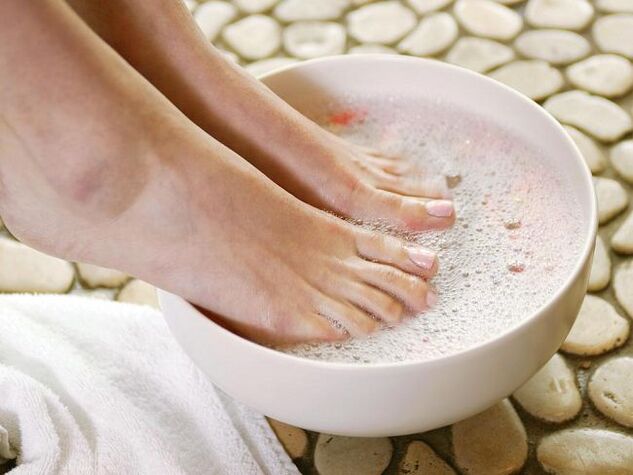
This allows the active ingredients to penetrate the skin better and have a more effective effect on the fungus. To make them disappear more effectively, many reviews recommend applying salicylic petroleum jelly to the affected areas twice a day.
The simplest, but, according to reviews, very effective folk method is a vinegar bath: the acidic environment has a negative effect on fungal spores and they die. To use this method, the recipe requires you to mix a 9% vinegar solution with very warm water in a ratio of one to eight (for men with rougher skin on their feet and thicker nails, you can use three to eight). Then dip your feet into the water. Steam for about ten to fifteen minutes and then start treating the skin.
To treat athlete's foot at home, you can choose a different sequence: first, simply steam your feet, cut off the affected skin as much as possible without injuring it, and only then dip your feet in a vinegar solution. At the end of the procedure, wipe your feet dry and apply the medicine (ointment and varnish).
For a more effective result, you can make a bath with vinegar and celandine. To do this, pour two tablespoons of celandine with water, cook for about 15 minutes, let it brew, add vinegar before steaming your feet.
Other uses of vinegar
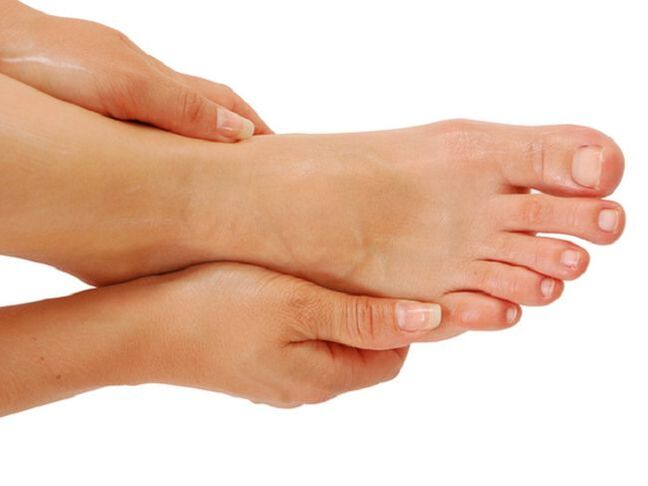
You can also treat athlete's foot with vinegar at home using a different method. If it suddenly turns out that the ointment against the fungus has suddenly run out and there is no way to get it, you can prepare a remedy based on it. This is necessary so that the fungal spores do not feel "free" and become active again. True, it is not a panacea, so you need to buy the drug prescribed by your doctor at the first opportunity.
To prepare a remedy for treating fungus, you can use the following recipe: mix a teaspoon of vegetable oil with the same amount of vinegar, add the antifungal agent dimethyl ester of orthophthalic acid, mix and apply to the affected skin. After that, wrap your feet in plastic, put on clean socks and finally the product should be absorbed into the skin.
You can also make a compress using another method: mix three egg whites or a tablespoon of glycerin with two large spoons of vodka and 70% vinegar in the same amount as vodka. After steaming and treating your feet, soak cotton wool in the product, apply it to the affected skin of your feet and wrap it with polyethylene. Do not leave it on for longer than half an hour as the product is very concentrated. For the same reason, the method is not applicable to small cracks.
Benefits of propolis
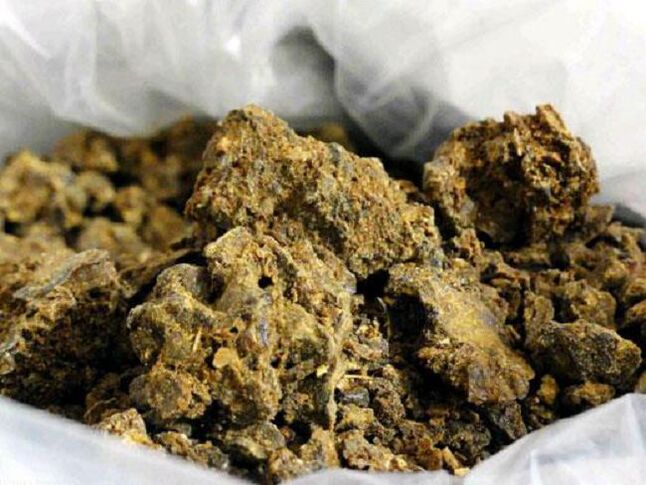
Many claim that they managed to get rid of the fungus at home thanks to an alcohol tincture of propolis, which is considered a natural antibiotic and has fungicidal, bactericidal and bacteriostatic properties. Propolis can relieve itching, stop the inflammatory process and prevent the fungus from affecting healthy areas of the skin.
To make an alcohol tincture yourself, you need to mix 20 g of propolis with 80 ml of medical alcohol and let it brew for a week. To treat athlete's foot with propolis, you need to apply a cotton swab soaked in propolis tincture to the affected skin every day and fix it with a bandage. This should be done several times a day.
Propolis ointment helps get rid of fungus. To do this, melt 100 g of any fat (butter, petroleum jelly, pork or fish oil) in a water bath, add 30 g of crushed propolis and cook over low heat, stirring, for about half an hour. Strain and apply to skin in the evening after steaming your feet (more often if desired). Keep refrigerated.
Iodine and garlic
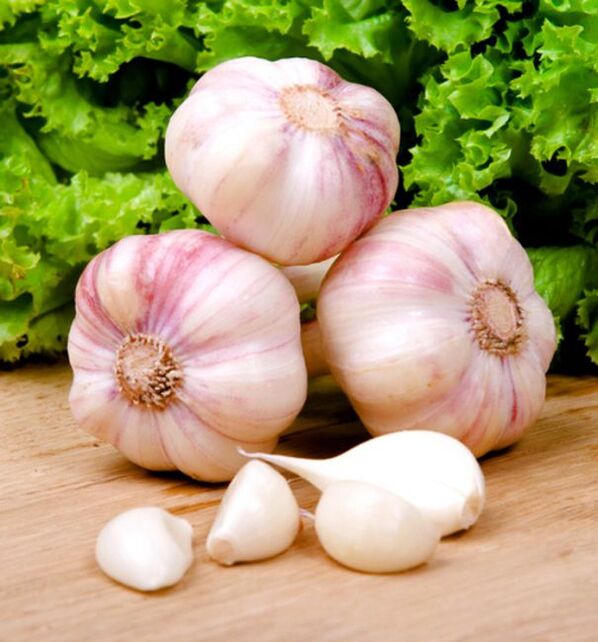
Another effective way to cure athlete's foot at home is a 5% iodine solution. It can be used if for some reason antifungal varnish is not available. It is not an equivalent replacement, but it is capable of stopping and even destroying fungal spores. Therefore, it is better to purchase an antifungal varnish at the first opportunity (if only because iodine cannot harden and block air access to fungal spores).
To use iodine, you need to carefully treat the affected nails once a day for two weeks.Beforehand, do not forget to process the nail surface with a nail file so that the iodine can penetrate deeper into the nail plate. When using this method, it should be borne in mind that burning is possible during the procedure.
Garlic is good against fungi. It can be used in different ways: not only applied externally to the skin, but also taken internally (this helps strengthen the immune system). You can prepare garlic according to different recipes.
A pulp compress helps heal athlete's foot. To use this method, you need to mince a few cloves of garlic in a garlic press or grate them on a fine grater. Then spread the paste on the nail and be careful not to get it on the skin. Fix them with a bandage in two or three layers, wrap them in cellophane and put on cotton socks. You need to make a garlic compress at night, remove it in the morning, wash your feet under running water, apply an antifungal cream and varnish if necessary.
If you don't want to make a compress against fungus at night, you can apply the paste to your nails, having previously steamed and cleaned them. Leave it on for 10-15 minutes until it dries. Do not walk around during this time. Use this method two to three times a day.
To treat fungus, you can use garlic tincture with alcohol. To do this, mix medical alcohol, squeezed garlic juice and water in equal proportions. Leave on for at least two days and treat nails twice a day. How long it takes to cure athlete's foot with garlic depends on how timely the treatment was started. Also do not forget to use antifungal ointments and varnishes.


















